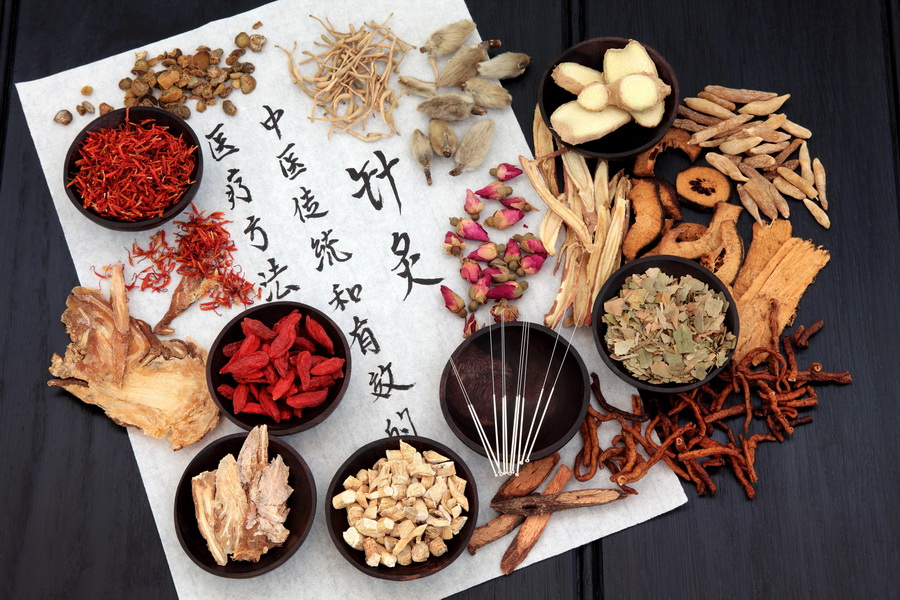
Throughout human history, the presence of illness has prompted people to seek both explanations and forms of care. In China, family carers and trained physicians developed practices such as herbal remedies, acupuncture, massage, movement exercises, and dietary prescriptions. These approaches were shaped by careful observation, philosophical ideas, and the needs of daily life.
Rather than forming a single system, these practices evolved regionally and were gradually interpreted, reorganised, and partly standardised during the late nineteenth and twentieth centuries. The modern framework that emerged is now referred to as Traditional Chinese Medicine (TCM).
Drawing on concepts such as qi and yin and yang balance, Traditional Chinese Medicine reflects historical approaches to holistic health and general well-being.
Tracing Vital Currents: The Living Origins of Traditional Chinese Medicine
The silk medical manuscripts discovered in the Mawangdui tombs – sealed in 168 BCE and unearthed in 1973 – provide some of the earliest surviving records of how illness was described and remedies catalogued in China. These early reflections later found fuller expression in classical works such as the Huangdi Neijing (Inner Canon of the Yellow Emperor). The Huangdi Neijing is an ancient composite text whose oldest parts date to the Warring States period (roughly the 4th–3rd centuries BCE), while much of the material was compiled and standardised during the late Warring States to early Han era (2nd–1st centuries BCE). In this work, health was understood as a dynamic harmony between body and cosmos.
Chinese medicine was never the exclusive domain of court physicians; remedies circulated through households, temples, and local markets. These varied health practices were often infused with moral and cosmological meaning, making vital balance a shared cultural pursuit as much as a personal one. Illness was understood as a disturbance of order, and treatment as a means of restoring both balance and social welfare.
Today, observers often highlight the perceived advantages of Traditional Chinese Medicine: its preventive focus and its attention to lifestyle as well as symptoms. While questions of safety and effectiveness remain under study, these long-standing practices are recognised as a cultural legacy in China.
For those interested in exploring this heritage first-hand, a visit to the Shanghai Museum of Traditional Chinese Medicine – housed on the Zhangjiang campus of the Shanghai University of Traditional Chinese Medicine, in Pudong New Area – offers an illuminating experience.
Its artefacts trace the evolution of healing philosophies from early writings to contemporary practice. Visitors can also enjoy an adjoining herbal garden where medicinal plants thrive and explore interactive display points designed to engage curiosity across many ages – an encounter with over two millennia of wisdom.
The Philosophy of Healing: Principles of Traditional Chinese Medicine
Core Principles

At the heart of Traditional Chinese Medicine lie three interconnected ideas.
First, yin and yang represent opposing yet complementary forces – cold and warmth, stillness and movement – whose balance is essential for health.
Second, the Five Elements – wood, fire, earth, metal, and water – form a system of correspondence linking seasons, emotions, organs, and tastes, expressed through the ‘generative’ and ‘controlling’ cycles that guide diagnosis and treatment.
Third, qi – often described as vital energy or breath – flows through the twelve main pathways known as meridians, which correspond to specific organs and bodily functions, sustaining movement and connecting mind, body, and environment.
Philosophy of Nature
In Traditional Chinese Medicine, people are regarded as part of a living cosmos, deeply connected to the rhythms of nature.
The principle of Tian Ren He Yi (天人合一) teaches that health arises from unanimity with the seasons, climate, and environment. Just as winter invites rest and conservation, while spring encourages growth and movement, vitality depends on adapting both body and mind to nature’s shifting patterns.
The Body

Traditional Chinese Medicine understands the body as a dynamic network of organs and channels, interconnected by qi. In this model, qi circulates through meridians, linking the solid and hollow organs.
Each organ is regarded both as a physical structure that governs bodily processes and as one that embodies elemental qualities and emotional states.
For example, the liver is associated with wood, kindness, and anger; the heart with fire, joy, and arrogance; the spleen with earth, compassion, and anxiety (often described as pensiveness); the lungs with metal, courage, and grief; and the kidneys with water, gentleness, and fear.
Concept of disease
Traditional Chinese Medicine explains illness as patterns of dissension within the body’s dynamic forces. Classical texts describe how these patterns can arise not only from external climatic and pathogenic influences – wind, cold, heat, dampness, dryness, and summer heat – but also from internal factors, including feelings and emotions.
These disturbances interact with a person’s constitution, shaping the individual expression of disease. Illness is therefore understood not only as an external attack but also as a disturbance of the body’s natural equilibrium.
Diagnostics
In Traditional Chinese Medicine, diagnosis seeks to identify patterns of balance and imbalance, rather than isolating a single symptom.
Practitioners draw on what are known as the Four Pillars: observation, listening (and smelling), inquiry, and palpation.
Observation often begins with the tongue, whose colour, shape, and coating are thought to mirror internal states.
Listening and smelling take account of the voice, the quality of breathing, and natural odours that may suggest underlying health issues.
Inquiry involves questions about sleep, appetite, digestion, emotions, and lifestyle, building a fuller picture of daily health.
Palpation focuses on the pulse, taken at three positions on each wrist, each corresponding to different organ systems and qualities of qi.
By bringing these impressions together, the practitioner forms a comprehensive picture of the body’s state and determines which therapeutic approach may best restore balance.
For travellers keen to immerse themselves in Traditional Chinese Medicine, China hosts regular gatherings for both domestic and international participants. The 2024 World Conference on Traditional Medicine in Beijing, co-sponsored by the WHO, the National Health Commission, and the National Administration of TCM, drew over 3,000 delegates from 85 countries and resulted in the Beijing Declaration, promoting greater global collaboration. The International (Bozhou) TCM Expo in Anhui Province offers an annual platform for trade, culture, and academic exchange, bringing together Chinese and foreign exhibitors and delegates.
Traditional categorisation
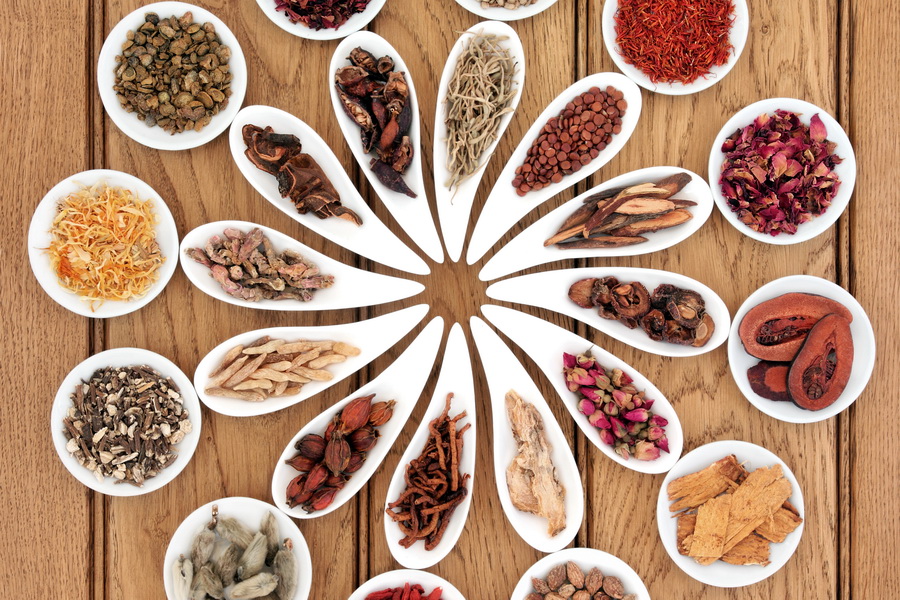
In Traditional Chinese Medicine, illnesses and remedies are classified through pattern differentiation – a system that groups symptoms and signs into functional categories.
In the World Health Organization–aligned model, patterns are divided into five main types:
- principle-based
- environmental factor
- body constituent
- organ system
- meridian–collateral disorders
Most conditions are understood as forms of disharmony affecting the organ systems, qi, blood, or fluids, or as the result of external invasion.
Another widely used framework applies the Eight Principles – interior versus exterior, heat versus cold, vacuity versus repletion, and yin versus yang – to guide diagnosis and treatment. Herbs and therapies are then selected according to these categories, with the aim of restoring balance through harmonising strategies.
Common Practices

Acupuncture
In Traditional Chinese Medicine, acupuncture is among the most widely recognised practices.
Very fine, sterile acupuncture needles are inserted at specific points along the body’s meridians to regulate the flow of qi. Different styles exist: for example, Five Elements acupuncture connects treatment with seasonal cycles, while foot acupuncture focuses on reflex zones to influence the whole body.
Many first-time patients ask, “How long does it take for acupuncture to work?” The answer varies: some experience relief after the first session, while chronic conditions usually require a series of treatments.
Movement practices
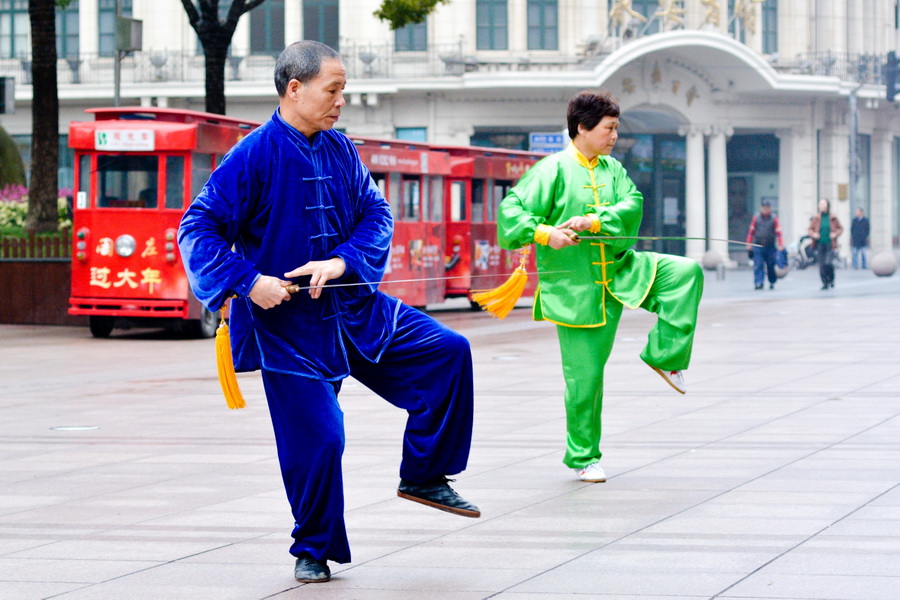
Often described as “meditation in motion”, Tai Chi and Qigong combine gentle movement, controlled breathing, and mindful awareness. Rooted in the rhythms of yin and yang, these practices are intended for proper qi circulation, balance enhancement, and soothing of the mind. Today, they are valued both as cultural traditions and as approaches to holistic health and are studied for benefits ranging from stress reduction to improved mobility in older adults.
To immerse yourself in the practice of Traditional Chinese Medicine, consider joining a morning Tai Chi class in one of Beijing’s parks – notably the Temple of Heaven, Beihai Park, or the grounds of the Summer Palace – where you can learn basic forms from instructors or friendly local groups and connect with residents who practise these movements daily.
Aim for early morning to observe authentic local practice, be respectful of each group’s space and pace, and ask before joining, or book a private guided class if you prefer an English-speaking instructor.
Moxibustion
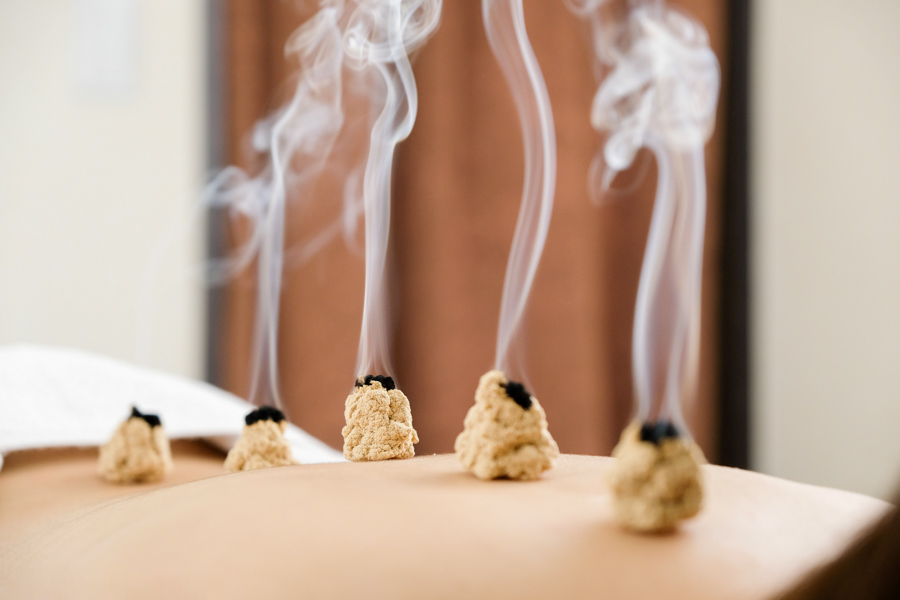
Closely related is moxibustion, in which dried mugwort is burnt near the skin to warm channels, stimulate circulation, and address qi deficiencies.
Both acupuncture and moxibustion are rooted in centuries of observation and continue to be taught in formal academic settings. When practised by skilled professionals, they are generally regarded as safe, though it is always advisable to be aware of possible side effects.
Herbs
In China, healing often begins in the apothecary, where jars of dried roots, aromatic barks, blossoms, and minerals are carefully combined into formulas intended to restore balance and support the organs. These herbal remedies, deeply embedded in Chinese culture, continue to inspire both fascination and scientific study.
While in Xi’an, a visit to the local herbal-medicine shops and the Chinese Herb Market offers the chance to marvel at these ingredients firsthand and speak with knowledgeable shopkeepers about traditional remedies. For treatments tailored to your needs, it is advisable to consult a licensed Traditional Chinese Medicine practitioner to ensure safety and appropriate care.
Food therapy
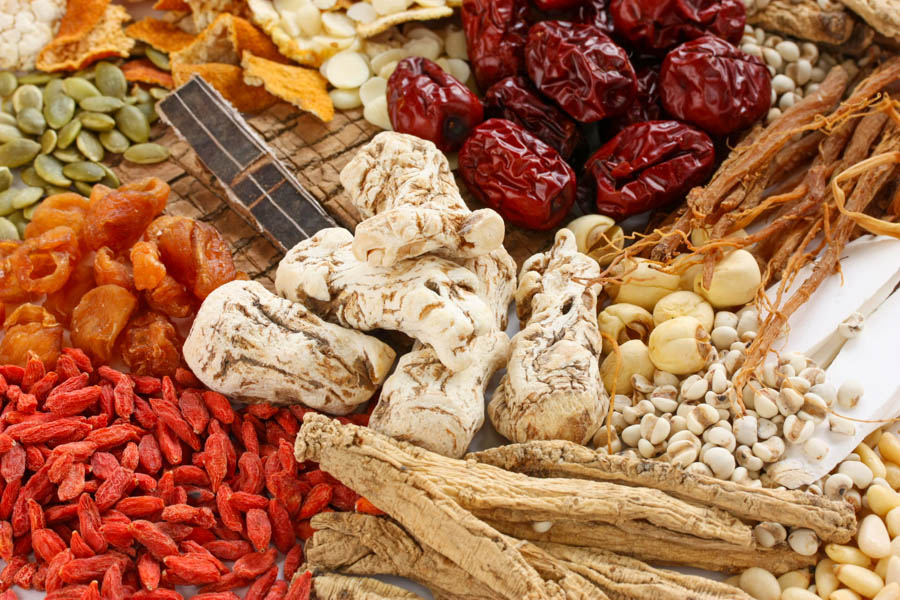
In the view of Traditional Chinese Medicine, the kitchen is often the first clinic: meals are chosen as carefully as prescriptions, their ingredients valued for warming, cooling, moistening or drying qualities. Imagine a bowl of rice porridge enriched with goji berries or fresh ginger to restore strength after illness; a soothing lotus root soup that nourishes the blood, steadies digestion, and quiets the mind; or a cup of mung bean soup, thought to clear heat and gently detoxify.
Many ingredients – ginger, garlic, goji, jujube, fermented beans – carry medicinal reputations, so ordinary dishes too often contain elements long believed to support health.
This living tradition, known as Chinese medicinal cuisine or food therapy (食疗, shí liáo), treats food itself as a means of seasonal and constitutional care.
For those wishing to explore China’s culinary traditions, our tour combines cultural highlights with culinary discovery – from market visits to cooking classes – illuminating how flavour, culture, and health gracefully intersect.
Beyond Healing: The Cultural Life of Traditional Chinese Medicine
Integration with Chinese Culture
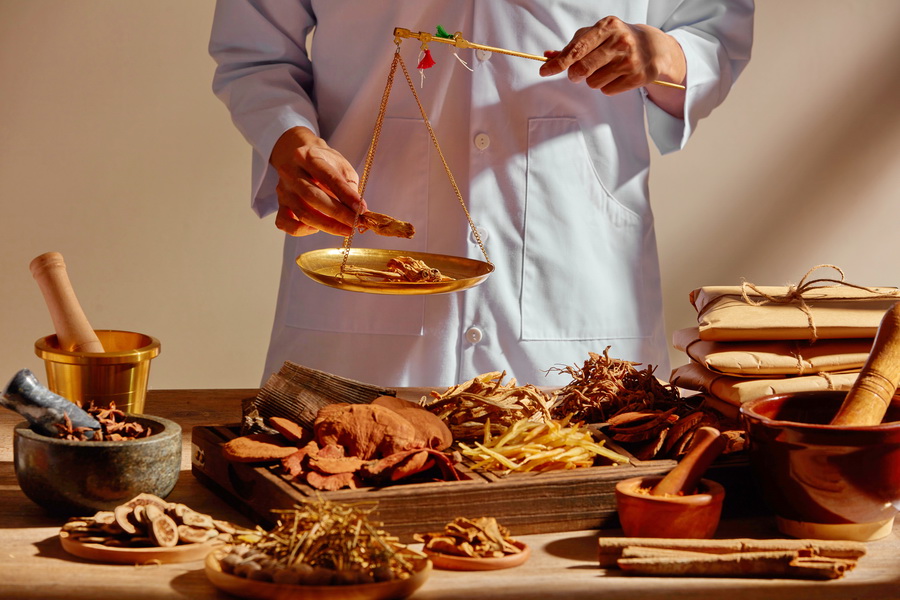
Traditional Chinese Medicine is deeply woven into the country’s cultural rhythms. It begins with simple, everyday practices of care – using medicinal plants, preparing healing foods, and drinking herbal teas – that remain part of household life. For those interested in learning about herbal treatments, a visit to the Tong Ren Tang Pharmacy in Beijing is highly recommended. Founded in 1669 during the Qing dynasty, it specialises in traditional remedies and offers a rare opportunity to consult with experienced practitioners, who can guide you in selecting herbs suited to your health goals.
When the body is nourished well, gentle movement helps sustain balance – expressed in the graceful forms of morning Tai Chi and Qigong practised in public parks.
Festivals highlight this connection between health and culture in especially vivid ways. During the Dragon Boat Festival, families hang sprigs of mugwort and calamus at their doors or wear herb-filled sachets to ward off illness. At the Double Ninth Festival, chrysanthemum wine is shared, and mountain walks are taken to promote vitality.
Science, Art and Aesthetics

It may be surprising, but beyond its primary role of restoring and sustaining health, Traditional Chinese Medicine has also been a wellspring of artistic expression.
Classical paintings and calligraphy often depict medicinal plants such as ginseng, chrysanthemum, and lotus, their brushstrokes uniting beauty and therapeutic meaning. Acupuncture charts, with their flowing meridian lines and symbolic acupoints, served not only as teaching tools but also as works of visual refinement.
This dialogue between medicine and art can be traced in canonical images and texts. Moxibustion (traditionally attributed to Li Tang) and Firing Elixirs at Jade Grotto (in the style of Qiu Ying) – both in the collection of the National Palace Museum, Taipei – portray medical practice through the lens of alchemy and transformation. Foundational works such as Li Shizhen’s Compendium of Materia Medica and The Divine Farmer’s Materia Medica further link imagery with meaning; both are available in modern English translation for curious readers.
The artistic imagination of healing continues in contemporary forms. American artist and writer Dan Graham’s Yin–Yang Pavilion (2003) interweaves mirrored glass, gleaming steel, and shallow water to evoke complementary opposites – visitors encounter shifting reflections that choreograph balance through movement. A more recent example, the VR (Virtual Reality) work The Rhythm of Tai Chi (2025) by XR (Extended Reality) designer Xianghan Wang, employs real-time motion tracking to map gestures onto digital avatars, enabling participants to perceive their own movement within a responsive field of light and rhythm.
Together, these examples illustrate how Traditional Chinese Medicine art reaches beyond clinical practice, becoming a source of continual creative renewal.
Holistic Health: Embracing Wellness Through China’s Living Medical Traditions
Benefits of Traditional Chinese Medicine
Traditional Chinese Medicine emphasises whole-person care, treating lifestyle, movement, diet, and environment as parts of a single approach to thriving rather than as isolated fixes.
Small, steady habits sustain health across decades. They remain accessible, culturally rooted, and readily adaptable to modern life, where they serve as a practical form of preventive care for all.
Examples of preventive strategies in Traditional Chinese Medicine include:
- Seasonal living: aligning daily routines with the rhythms of nature, such as resting more in winter and rising early in spring.
- Breath cultivation: gentle breathing practices to dispel stagnation and refresh qi.
- Self-massage: simple techniques for the hands, face, or feet that families use to improve circulation and calm the body before sleep.
- Balancing work and rest: avoiding extremes of labour or leisure by weaving restorative pauses into the day.
- Emotional regulation: cultivating calm and steadiness through activities such as calligraphy, music, or quiet walks to ease stress.
Explore Wellness: Retreats and Experiences in Traditional Chinese Medicine

For those wishing to experience Traditional Chinese Medicine beyond books and museums, opportunities abound across China. In cities such as Beijing and Shanghai, professional institutions open their doors to those interested in alternative healing modalities.
Across China, retreat centres offer immersive wellness programmes where Traditional Chinese Medicine is combined with meditation, Tai Chi, and dietary therapy, inviting guests to rest, rebalance, and cultivate holistic health.
- Six Senses Qing Cheng Mountain near Chengdu, known for combining Traditional Chinese Medicine practices with exceptional cuisine and whole-family accommodations.
Address: No.2 Dong Ruan Road, Qingcheng Mountain Town, Dujiangyan, Chengdu, Sichuan, 611844 China - Tea & TCM Wellness Immersion in Wuyishan (Wuyi National Park), where mornings begin with Qigong, afternoons explore tea culture and herbal workshops, and guests receive personalised non-pharmaceutical Traditional Chinese Medicine therapies.
Address: Yang Zhuang Xiang, Wuyishan, Nanping, Fujian, China
For those seeking care for specific conditions without joining a retreat, leading university hospitals welcome outpatients, offering consultations that combine modern clinical expertise with a deep understanding of Traditional Chinese Medicine.
- Dongzhimen Hospital, Beijing – affiliated with the Beijing University of Chinese Medicine (BUCM) – is a Grade-3A* (top-tier hospital under China’s national classification system) hospital with outpatient services in departments of neurology, cardiology, internal medicine, orthopaedics, and a wide range of Traditional Chinese Medicine specialities.
Address: No. 11, Bei San Huan East Road, Chaoyang District, Beijing, China. - Shanghai Municipal Hospital of Traditional Chinese Medicine, Shanghai – affiliated with Shanghai University of Traditional Chinese Medicine (SHUTCM) – is a Grade-3A* (top-tier hospital under China’s national classification system) general hospital with outpatient services across multiple specialities, consultations, and treatments provided by distinguished Traditional Chinese Medicine practitioners.
Address: 1200 Cai Lun Road, Zhangjiang Hi-Tech Park, Pudong New Area, Shanghai, China. - Xi’an Hospital of Traditional Chinese Medicine, Xi’an – affiliated with Shaanxi University of Traditional Chinese Medicine (SXUTCM) – is a Grade-3A* (top-tier hospital under China’s national classification system) hospital with outpatient services in departments such as encephalopathy, cardiology, gastroenterology (spleen & stomach), orthopaedics, acupuncture and massage rehabilitation, and a wide range of other specialities.
Address: No. 69, Fengcheng 8th Road, Xi’an, Shaanxi Province, China.
*Note: A3-classified hospitals offer advanced specialised medical and health services to multiple regions and undertake higher education and scientific research responsibilities.
For travellers joining our China tours, visits to retreats or hospitals are best planned as extensions, since meaningful engagement with Traditional Chinese Medicine is rarely a hurried experience. Allow at least three to five additional days for a retreat or short programme.
Before booking a traditional Chinese medicine consultation, keep these points in mind for a safe and authentic experience:
- Inform your regular physician: share your plans for treatment to ensure compatibility with any existing conditions or medications and to discuss potential contraindications.
- Choose trusted providers: whenever possible, select hospitals or clinics linked to teaching institutions to ensure professional oversight and safety.
- Verify practitioner credentials: check details of the practitioner’s licence and training.
- Check interpreter availability: confirm that an English-speaking practitioner or professional interpreter will be present, and clarify any related costs.
- Confirm pricing and treatment plans in writing: request an itemised estimate and written treatment outline, including the expected number of sessions.
- Consider the overall quality: review other patients’ feedback and general standards of service.

